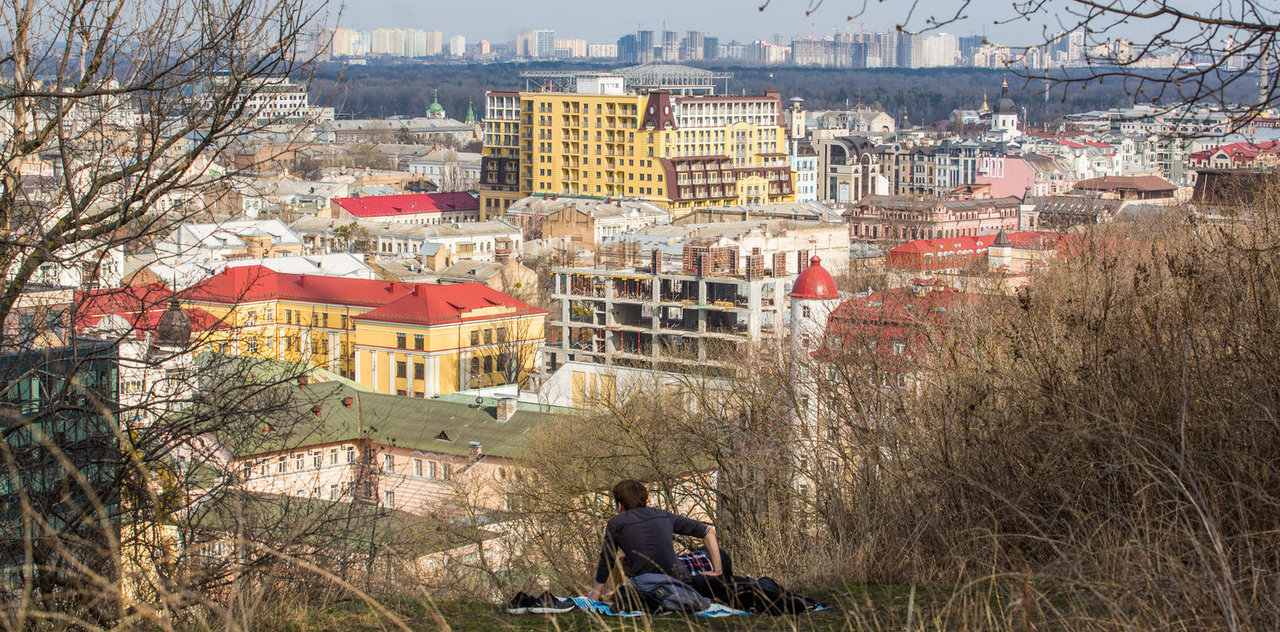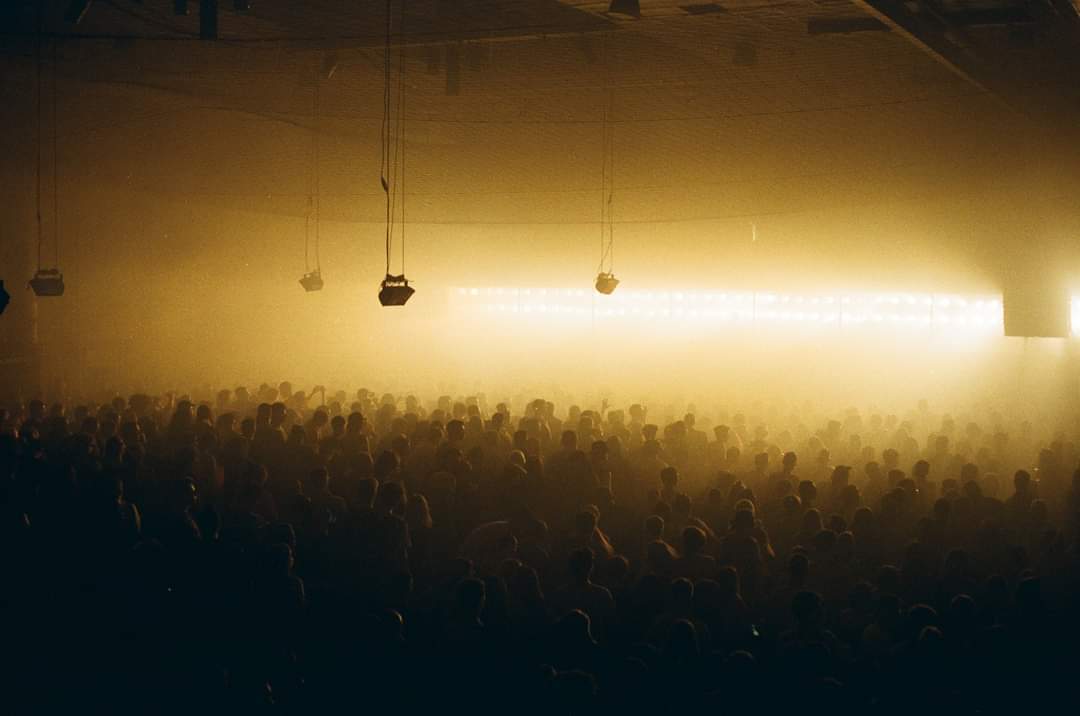The history of electronic music in Ukraine deserves its own in-depth study by a professional music scholar. This would include the parallel worlds of academic electroacoustics with its painful institutional establishment, synth obsessions, the local history of rave, which began in the 90s, international portfolios of a few electronic experimentalists, and, finally, the current all-pervasive trend of electronic music on all levels.
Are those worlds really that mutually isolated as they might seem at first glance? I would say “not really” if you trace the lineups of the prominent electronic music festivals like NextSound. Then you may see the guardian of Ukrainian electroacoustics, IRCAM-trained
Alla Zagaykevych, perform among self-taught noise veterans in the epicenter of all techno, the internationally known Closer club. But that's clearly not an everyday thing.
While dance music was conquering the media with creating its own pantheon, and modern technologies settled in our homes, the new millennium presented the electronic underground of radical qualities. Now it gained international connections through the Internet and was clearly needless to jump across language barriers. Even not so long ago, when I met independent music experts from abroad, they tended to name Andrey Kiritchenko and his
NexSound label, as well as Kotra and Zavoloka of Kvitnu, as what they know of Ukrainian music. Not only these artists did much for popularising a wide range of electronic music practices by their own creative examples, but also their roles as publishers and festival initiators do matter. Originated from Kharkiv, Andrey Kiritchenko is one of the major figures on the electronic scene for the last two decades, and so was his label Nexsound. In recent years Kiritchenko curated NextSound festival with the likes of Sote, Mouse on Mars, and Rrose alongside Ukrainian artists such as Voin Oruwu, Nikolaenko, Bryozone or Noisynth.
An outsider story came loose off the label. The multifaceted improv wanderers
The Moglass grew up attending Novaya Scena events in the nineties Kharkiv. Nowadays they continue to explore a free-improv-meets-butoh-dance unit called White Blood Blue Bones, while collaborating with likeminded avant-folkers Riasni Drova Consort, or performing with electroacoustic outfits of synth wizard
Stanislav Bobrytskyy. All down the rabbit hole!
If one persists in tracing connections between the 90s Underground and the 2000s electronic community, one may see how pervasive these traces actually are. In the catalog of Edward Sol’s Quasi Pop, there were the likes of Langsames Steuer and Rabbota Ho, the bands of that era. The label's historical compilation
Between Rains And Drought was predicting the rise of Odesa's Cardiowave. And the list goes on with Oleksandr Yurchenko’s electronic band Suphina Little Beasts, Merzbow, and Mats Gustafsson. In Ukraine, Sol’s own analog electronic records were also released by Kvitnu.
Kvitnu’s
Detali Zvuku Festival was central to the experimental music community. Just until recently, you could find Kvitnu's now Berlin-based residents remixing “Lullaby for the enemy” by a war veteran and Ukrainian singer CTACIK. Or putting out their own new solo releases, and also the reissues of Muslimgauze, and so on. For around twenty years were and still active Ternopil’s
ZSUF, Dubmasta's SKP Records with its exotica travelogue taste, and even longer–the hometaping veteran producer
King Imagine. Dnipro's dark electroacoustic unit
Gamardah Fungus is persistent for over a decade. Newer contributions to the experimental angle were made by several fruitful and obviously diverse communities and labels, such as the Ternopil's long-standing
Pincet, Teple Yabluko, The Institute of Sound.
Motoblok, Diser Tape and NFNR are representive of these groups respectively. A duo
Ptakh_Jung is gaining popularity exponentially, and even an indie pop act Grisly Faye came out of the 2010s experimental milieu in some way. Another outsider initiative was Chenihiv's Flying Super Pension led by Dima Silich, the founder of
Delta Shock record label.
In the past six or seven years, electronic, and mainly dance music gained a new level of popularity and media coverage. Last year’s editions of the Strichka Festival and Brave! Factory (both under the umbrella of the famous Closer club) gathered thousands of visitors respectively, with 30% foreign guests. The club was always collaborative with different initiatives and festivals, and even launched important cross-genre projects like the
Am I Jazz? festival. As with most of the venues worldwide, the current crisis seems to be a threat to Closer’s existence.
The vivid nightlife is always on point at the famous weaving factory, where the club is surrounded by a nebula of other independent venues or platforms: Mezzanine, Otel’, 2c1b, 20ft Radio and more.
Not a partygoer myself, I noticed that many people of various backgrounds–be them office clerks, bohemians, classical musicians, or else–are into dance culture. Some said that it gave them a sense of transgression, and some are definitely into the culture itself. Not so long ago, the state-owned Dovzhenko Centre was a home for Plivka, a space for collaboration between new classical music, electronic community, and even improvisers and experimentalists.
Since 2014 a series of parties called CXEMA has become one of the biggest things in Kyiv’s raving life. Just two years ago TIGHT magazine
wrote that “the [CXEMA] parties have got a new form, which differs from everything that is happening not only in Kyiv but also far beyond its frontiers”. Electronic dance music events of different flavors occurred systematically. From Rhythm Büro to ШЩЦ and beyond. Post-punk/synth-wave promo Worn Pop have intermingled within this all too.
The recent study of Ukraine’s music market
points out the lasting Kyiv-centric position in terms of industry. TIGHT magazine’s co-founder and editor, Maya Baklanova also emphasizes this tendency for the electronic music scene. “I’m not sure if it’s possible to articulate with such a term as ‘Ukrainian electronic scene’ in general, since it seems that in Ukraine there is a big problem with the decentralization of culture”, she says. Nevertheless, the expert pays her respects to different regional initiatives including the Construction Festival in Dnipro, Kultura Zvuka in Kharkiv, or Atom Festival in Zhytomyr.
In regards to the new rise of its bohemian culture, Kyiv was penned by the mainstream media as “the new Berlin”, obviously a lazy cliché at best. Baklanova thinks that the distinction between musical communities in Kyiv and, for example, Berlin, lies in the enthusiasm itself as a basis here. “Perhaps, owing to this enthusiasm, our scene will be able to emerge from this protracted crisis without state support”, she assumes. The journalist also suggests that electronic musicians are not very business-oriented. “Compared to artists not from here, with whom I had to communicate, [the latter] always clearly know what they will get from each of their actions, and know exactly what they want in most cases. Our artists are young dreamers that live in their own worlds”, she concludes. And that correlates with the study mentioned above, according to which, music is the main source of income for only around 37% of Ukrainian musicians.


